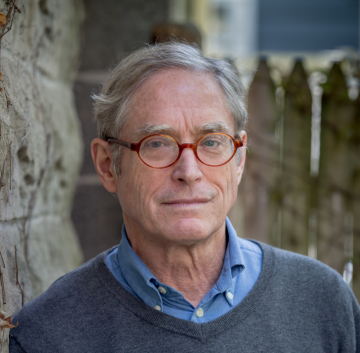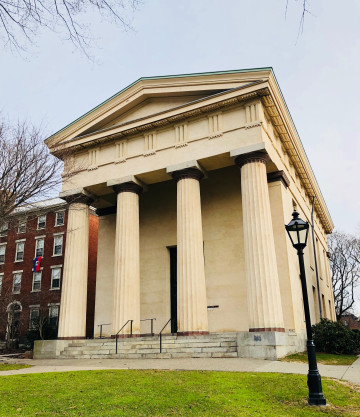Whitcomb: Torpor Time; Summer Reading; Legacies; Wonders of Walking
Sunday, July 09, 2023
They are not long, the weeping and the laughter,
Love and desire and hate:
I think they have no portion in us after
We pass the gate.
They are not long, the days of wine and roses:
Out of a misty dream
Our path emerges for a while, then closes
Within a dream.
-- “The Shortness of Life Forbids Us Long Hopes” (as translated from the poem’s Latin title), by the short-lived and alcoholic English poet Ernest Dowson (1867-1900). The title of the movie The Days of Wine and Roses, about an alcoholic couple, came from this poem.
xxx
“What I remember is the ebb and flow of sound
That summer morning as the mower came and went
And came again, crescendo and diminuendo….’’
-- From “The Sound I Listened For,’’ by Robert Francis (1901-1987), American poet who lived much of his life in Amherst, Mass.
To read the whole poem, hit this link:
xxx
“America is still a government of the naïve, for the naïve, and by the naïve. He who does not know this, nor relish it, has no inkling of the nature of his country.’’
-- Christopher Morley (1890-1957), a once-famous American journalist, essayist and poet.
xxx
As we move into high summer, the green of the trees and grass is less intense, as are the scents of flowers and the volume of birdsong. Soon the goldenrod will blaze by the roads. On some days, we settle into an agreeable torpor, perhaps more socially acceptable in July than in any other month in our workaholic nation. And it’s a time in which to read long novels, biographies and histories, albeit nodding off from time to time while doing it.
Ah, cookouts! The smell of burning flesh. Yellow jackets! Ants! Snakes (usually just garter snakes)! The distinctive smell of lighter fluid to ignite the charcoal. Squirrels eyeing the proceedings, ready, like the birds, to swiftly move in for any food detritus we accidentally left behind.
One of the pleasures of summer in New England is stopping by blackberry, blueberry and raspberry bushes and feeding yourself with these tart or sweet “antioxidant-rich superfoods.” By the way, wild blueberries, which famously cover a lot of ‘’barrens’’ in Downeast Maine, taste better than the cultivated ones.
A walk on a beach this summer, or along many otherwise pretty roads, shows you how urgently Rhode Island needs a bottle bill.
Do you still follow those old summer myths – e.g., that swimming after eating will give you cramps that could end up drowning you? No it won’t. Or that getting a tan is healthy. “You look healthy!‘’ our parents used to say to our sunburned faces, in a mistake that you can trace back to the 1920’s when having a tan started to be associated with the leisure time of the affluent rather than with farmers and day laborers. Getting your tan in such sexy places as Florida, California and the French Riviera gave you a particular status.
Now, after decades of skin-cancer removals, a couple rather gory, I head for the shade as much as I can.
The Magic of Magazines
I miss the rafts of magazines (real ones on paper!) we used to get in the ’50s and ’60s. I reveled in them during summers, when I had more time to look at them, indeed, when we all seemed to enjoy more leisure than we do in today’s Internet-driven world. When I was young, we subscribed to about a dozen magazines. Their book-like format and, in many magazines, four-color photography on paper specially made to display photos, made them very inviting to leaf through.
I occasionally wrote for magazines, but most of the writing and editing jobs in journalism were in newspapers, which generally prospered until about 2000, when the World Wide Web’s threat became clearly existential. So papers gave me a living.
My friends in New York’s weekly-magazine world in 1970-1990 regaled me with their typical schedules: Monday, do virtually nothing; Tuesday, do a few hours of reporting, mostly by phone, write notes; Wednesday, start writing and/or editing, smoke a lot; Thursday, write or edit for 12 hours straight while arguing, chain-smoking and guzzling coffee; Friday, final anxious rescue missions for troubled and/or complicated stories as the deadline approached; Friday night, get drunk, often with people from rival magazines.
Of course, while TV was an expanding competitor for Americans’ time, the country had a much stronger reading culture than now. Many people, even those with TVs, looked forward to spending evenings reading magazines and books. Maybe that’s why there was less insomnia then. Evening reading on paper can be delightfully soporific compared to watching stuff on screens, which can screw up your brain waves.
Among our many subscriptions were those for Time, Life, Look, The Saturday Evening Post, Reader’s Digest, Business Week, The Saturday Review, Redbook (low rent), Pageant (sleazy), Harper’s, The Atlantic Monthly, Collier’s and The New Yorker. Their approach ranged from low-brow to upper-middle brow, such as The New Yorker.
That’s where I first read Rachel Carson’s revolutionary book Silent Spring about how pesticides (especially DDT) were killing massive numbers of wild animals and gravely threatening ecosystems. The magazine serialized the book in three parts in the summer of 1962, when I read it on our slate-floor porch, through the screen of which wafted a humid southwest wind, rustling the leaves of the tall oak trees on the other side of the rocky lawn. The book itself came out that September.
We even got The Illustrated London News. My strongest recollection of it is its grim black and white photos of London neighborhoods still in ruins as a result of the Nazi bombing, only a little more than a decade before.
God knows what the total cost of all these subscriptions was!
Allow a Little Legacy
I support those “elite” colleges and universities that give a preference to “legacy” applicants for admission, with the proviso that the preference be very modest. I’m talking about high-school students who are “close” (definitions can vary) relatives of alumni and whose high-school records have shown that they can do the work required at the colleges they apply to. Make it no more than, say, 5-10 percent of admits. (For some reason, there are fewer complaints about athletes also getting a leg up in admissions, perhaps because of Americans’ love of competitive sports. Some come from fancy backgrounds, some from poor ones. Certainly, being an athlete can be one way for a kid from a poor background to overcome barriers to going to an elite school.)
I take this politically incorrect position because, first, people with family connections to an institution have emotional links to it that make them much more likely to donate to it, and some of that donated money goes to scholarships. College development offices know how to pluck these family heartstrings!
The other reason is that legacy admits, who are usually white and tend to come from economically, professionally and politically well-connected backgrounds, provide an opportunity for students from lower-income and middle-class backgrounds to make campus connections that will help them prosper after college. And the composition of legacy admits will change over time. Consider that today’s students who may have benefited from affirmative action may hope that their children get a legacy leg up.
In any event, colleges and universities with national and international roles and ambitions have innumerable things to weigh as they seek to develop student bodies whose broad diversity of backgrounds can energize education and reflect, at least in a rough way, the broader society, which they’re supposed to be bettering. Yes, I know that they receive federal money, but do we really want politicians and an increasingly politicized Supreme Court telling them how to run their institutions, other than banning clear racial discrimination?
Indeed, I find it unsettling and a bit hypocritical that some “conservatives” as well as some 'liberals,’’ call for micromanaging private-sector colleges through banning their legacy admissions and other policies. For that matter, “pro-business” zealots are increasingly sounding socialistic, or maybe Fascist, as they try to tell the likes of Disney and big investment funds how to run their businesses.
Then there are their book bans….
And they loudly assert that they believe in “freedom.’’
xxx
For various sociological reasons, I have mixed feelings about the Supremes’ jettisoning of the Biden administration’s student-loan forgiveness program. It’s highly debatable whether the administration had full legal authority to implement his program without authorization by Congress.
Still, I have strong feelings about the hypocrisy of many of the program’s foes, some of them rich and some of them GOP/QAnon politicians, who had their COVID era Paycheck Protection Program (PPP) loans, totaling in the many billions of dollars, completely forgiven.
MIT and Federal Reserve economists reckoned that while the PPP money did save perhaps 3 million jobs in the worst of COVID, the major beneficiaries of PPP money were business owners and shareholders —not workers.
They said that between two-thirds and three-quarters of the PPP's benefits "did not go to paychecks, however, but instead accrued to business owners and shareholders," and they estimated that "about three-quarters of PPP benefits accrued to the top quintile of household income."
xxx
There’s been a lot of press about turning big office buildings in central business districts into housing. And some of this is feasible, despite the engineering challenges of retrofitting. But central business districts, need, well, businesses. So companies that realize how much creativity comes from people working in groups in person, as opposed to laboring alone with their screens at home, must find ways, obligatory or not, to get far more employees back to the office.
The healthiest post-COVID center cities will be those that are a 24/7 mix of business and residential, with a range of services for both sectors. Live near where you work.
Free Speech Only for Far Right?
“The most stringent protection of free speech would not protect a man falsely shouting fire in a theatre and causing a panic... The question in every case is whether the words used are used in such circumstances and are of such a nature as to create a clear and present danger that they will bring about the substantive evils that Congress has a right to prevent.’’
-- U.S. Supreme Court Justice Oliver Wendell Holmes Jr. (1841-1935)
Far-right Louisiana U.S. District Judge Terry Doughty, to whom Trump gave the job in 2017, has moved to sharply limit the federal government’s communications with such social-media companies as Facebook and Twitter because Doughty apparently believes, or would like to believe to please his pals, the debunked right-wing conspiracy theory that the federal government has suppressed conservative speech on social-media platforms. It has not; if anything, far-right and Fascist figures have found Facebook, etc., a paradise for promoting their lies and conspiracy theories.
And the Feds have never ordered social media to do anything, and have no plans to do so. All they’ve done is to alert those media when they have information about such threats as domestic terrorism and disinformation from foreign foes, such as Putin.
Government officials have the duty to protect public health and safety and prevent terrorism, and this requires communicating with media and the general public before, during and after emergencies. And these officials, like avid GOP/QAnon fans, have the right to free speech, too.
The worse the education level in a state, the worse the politics and vulnerability of the public to lies. As with most deep Red states, Louisiana is an example.
xxx
A baker or a graphic designer, etc., should have the right to refuse to take a job involving, say, celebrating a gay marriage. But these refuseniks would do well to suggest to those they don’t want to do business with the names of people who would take the job.
Enemies Among Us
In 2020, the U.S. blocked a plot by Putin to assassinate in America a CIA informant who had been a high-ranking Russian intelligence officer. This shows how far the tyrant is willing to go to kill or at least terrorize anyone he sees as crossing him. Of course, he has had other foes murdered abroad and at home. But his 2020 plot, during the Trump administration, whose leader was in awe of him, crossed a red line -- going back to the start of the First Cold War -- that stopped the Soviet Union/Russia and the United States from killing people in each other’s country.
Meanwhile, Chinese agents are in America seeking to track down and scare dissidents who have fled that dictatorship.
The FBI needs more resources to confront these threats by our enemies.
xxx
Ah, the joys of international trade!
The Chinese sell fentanyl and fentanyl precursors to Mexican drug cartels, which are heavily armed with guns made in the U.S. The cartels then move the drugs north to meet some Americans’ insatiable hunger for illicit and often lethal drugs.
Walking Through History
Most of us should walk more. Reading polymath essayist Rebecca Solnit’s 2001 book Wanderlust: A History of Walking might help get us going.
She looks at research and speculations about how our ancestors became bipeds, and then explores the spiritual, physiological, aesthetic, literary, political and other aspects of walking over millennia, all informed by a passion for open-minded and sometimes very eccentric explorations of landscapes, villages, towns and cities. Numerous big-name walkers make appearances, such as Aristotle, William Wordsworth, Henry David Thoreau, Charles Dickens, Walt Whitman, John Muir, and Umberto Eco (with his imaginary walks), but a lot of the walking is Solnit’s and in many surprising places, including Las Vegas!
She tells us about those who have walked for many miles in the deep countryside, in dense and dangerous cities, for political revolutions, for sex and other exciting activities, and in suburbia, as well as on tall and dangerous mountains and even on treadmills.
She writes:
“Walking, ideally, is a state in which the mind, the body, and the world are aligned, as though they were three characters finally in conversation together, three notes suddenly making a chord.”

Robert Whitcomb is a veteran editor and writer. Among his jobs, he has served as the finance editor of the International Herald Tribune, in Paris; as a vice president and the editorial-page editor of The Providence Journal; as an editor and writer in New York for The Wall Street Journal, and as a writer for the Boston Herald Traveler (RIP). He has written newspaper and magazine essays and news stories for many years on a very wide range of topics for numerous publications, has edited several books and movie scripts and is the co-author of among other things, Cape Wind.
Related Articles
- Whitcomb: America Fuels Mexican Violence; Primary Problem; Ivy League Price-Fixing? Perry Mason
- Whitcomb: Healthcare Quandary; Tax ‘Em, Then Untax ‘Em; Anonymous Reports; Politics Is a Drag
- Whitcomb: What Went Wrong; Can’t Make a Decision; Back to the Pequot River?
- Whitcomb: Lunching on Old Times; Bike Lanes in Newport; ATVs; A Spy Writer’s Material
- Whitcomb: Easter Ambiguities; Fortuitous Follies; Tracks to South Coast; Guns Galore
- Whitcomb: Cicilline’s New Job; Carter’s Career; No Bottom; ‘Nightlife Economy’
- Whitcomb: Fane Decision; Anti-Business GOP; ‘Junk Fees’; Green Lights for Putin
- Whitcomb: AI and the Real You; Clinical Capitalism; Documents Drama, Cont.; Town/Gown; Jan. 6
- Whitcomb: Closeups in the City; R.I. as Mass. Satellite; Energizing Energy News; Guns for Tots
- Whitcomb: Working and Drinking; Better Than S.F.; Shell Game Not Over; Unions vs. Democracy
- Whitcomb: Theology and Catastrophe; Gasoline-Tax Idea Looks Sillier; Switch to Tents?
- Whitcomb: Road Blocks Coming? Getting Out of the Booths; They’re No ‘Ladies’; Soothing Rx for Social
- Whitcomb: Old Walks; Shoreline Stuff; What’s Meant by ‘Best’? Local Boy Right-Winger and Great Leak
- Whitcomb: Smoke Gets in Our Eyes; Go Vertical and Prefab; That Old House; ‘The Longevity State’?
- Whitcomb: Neighborly Taxes; Affirmative Action by Other Means? Don’t Gum Up the Turbines; Wet Power
- Whitcomb: Woo Sox Experience - ‘And the Living Is (Sometimes) Easy’; Bloated Budget, My Trump Take
- Whitcomb: Back to the Farm in NE; Addicted to Adventure Drama; Hunter Woes; Peddling Plots
- Whitcomb: Ambiguities of Patriotism; Nonstop Nimbys; When Gangsters Reign; ‘Social Housing’
- Whitcomb: Leisurely Lunches; Unchecked Candidates, Goncalves Fiction; Ceiling Cracks
- Whitcomb: Newport Spring; Order a Tree; Read While Traveling; Immigrant Solutions
- Whitcomb: Need Giant Venus Flytraps; After-School Learning; Oh, for a Trial! Coastal Conundrum
- Whitcomb: Providence Recession Prep; Maine Chance; Extended-Family Housing
- Whitcomb: Trust Troubles; Take Their Money; Bank Roulette
- Whitcomb: At the End; Parking Over Housing; Steam From the River; Bearing Witness








